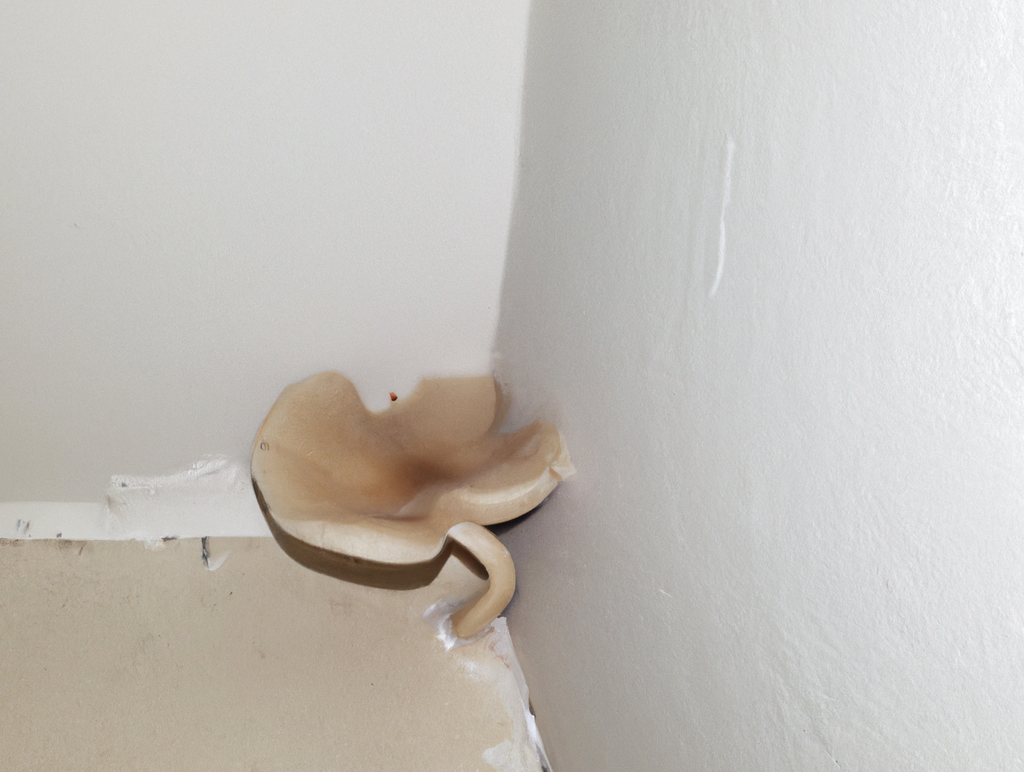Mold and Mushrooms Growing in Houses
Mold and mushrooms are definitely not something you want to see growing out of your walls in your house. This article will discuss what mushrooms growing in your house is likely caused by, if it is related to mold, how dangerous mold mushrooms or regular mushrooms are in your house, and what you can do to get rid of them.

Are Mushrooms Mold?
While mold and mushrooms are both fungi, they differ in various ways, and the presence of mold does not necessarily mean that mushrooms will also grow. That being said, the conditions that are optimal for mold growth are similar to the conditions that are optimal for mushroom growth. Also, like mold, mushrooms produce spores, and certain fungi can produce mycotoxins which can cause health problems. So if you have mushrooms in your house it is not a good sign.
Does Toxic Black Mold Produce Mushrooms?
No, Stachybotrys which is often referred to as black mold does not generally produce mushrooms. So the chance of the mushrooms in your house being black mold mushrooms is unlikely. That being said, you still have some sort of issue going in if you have mold and mushrooms growing in your property. The mushrooms you are seeing are probably caused by some other type of mold or some sort of other fungi.
The most common types of mushroom producing mold that are black and found in homes are:
- Penicillium
- Aspergillus
- Cladosporium
Are the Mushrooms Growing in My House Dangerous?
Yes, mushrooms growing in a house are a health hazard and should be taken care of as soon as possible. If you have mushrooms in your house chances are that you have water damage and mold also as both mold and mushrooms need moisture to grow. Not to mention that the mushrooms even without the presence of mold can often be dangerous on its own too. Like mold, mushrooms produce spores, and certain mushrooms can produce mycotoxins. They can also damage the building materials upon which they are growing on as they are natural decomposers like mold is.
Where Do Mushrooms Usually Grow in a House?
The mold common places for mushrooms to be found in a house are on: the walls, the ceiling, the carpet, the kitchen cabinets, the window sills, and the shower. The most common rooms they are found in are in the bathroom and in the basement. The mushrooms that grow in houses are commonly white or black in color, but they can also be many other colors depending on what type of mushrooms they are.
How to Stop and Get Rid of Mushrooms From Growing in Your House?
As we mentioned before, if mushrooms are growing in your house then chances are that you have some sort of water damage that is feeding it. Also, mushrooms have roots called hyphae that extend far beyond the surface of where you can see. So if the mushrooms are growing on the wall in your house for example, you will also need to remove all of the building materials that have hyphae on them and fix the water damage in order to prevent future fungus growth. You cannot simply remove the mushrooms and hope that it will solve your mold and/or mushroom problem because it won’t. below is a step by step process to get rid of mold and mushrooms that are growing in a house. Keep in mind that this is the same process that would be used to get rid of mold because they are both very similar.
Before you begin, it is crucial to prioritize safety by putting on proper equipment such as sanitizable and disposable safety goggles, gloves, dust masks or respirators, and full body suits to prevent exposure to mold spores.
Next, it’s important to detect any mold and moisture present in your property. Using a moisture meter can help identify areas with high moisture levels, which may indicate leaks or other sources of water damage that need to be addressed. If you come across heavily contaminated personal belongings during the process, it’s recommended to dispose of them to prevent further mold and mushroom growth, while other items may need a mold specialist’s assessment.
To prevent mold and mushrooms from spreading during the remediation process, it’s necessary to isolate the contaminated area by closing off any vents and creating a barrier using 6 mil polyethylene sheeting.
Proper ventilation and negative air pressure can be achieved by opening doors and windows and using an exhaust fan, which can help prevent mold and mushroom growth by improving air circulation. Additionally, a HEPA filter can be used to remove mold spores from the air.
Before beginning demolition, it’s important to know what the building materials are made of to ensure that hazardous materials like asbestos are handled properly. Contaminated building materials should be double-bagged in plastic bags and disposed of correctly.
Once most of the contaminated building materials have been removed, the remaining mold can be cleaned using wire brushes and disposable wipes. Afterward, moisture must be dried to reduce the chances of mold returning, and waterproof materials should be used during reconstruction to reduce the risk of future water damage and mold growth.
Conclusion
The fact mushrooms are growing in your house is not normal and is cause for alarm. It probably means that there’s some sort of water damage in your property and possibly mold growth too. The best thing to do if you see mushrooms growing in your property is to call a professional like us as soon as possible to asses the situation and suggest a way to get rid of it.